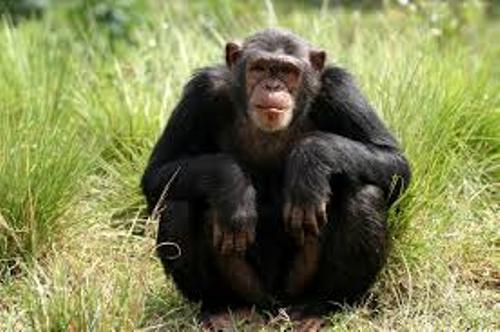
Chimpanzees and all other nonhuman primates have only the working version in other words, they’re on the powerful, “sprinter” end of the spectrum. People with two working versions of this gene are overrepresented among elite sprinters while those with the nonworking version are overrepresented among endurance runners. (Puny jaws have marked our lineage for as least 2 million years.) Many people have also lost another muscle-related gene called ACTN3. The design of the chimpanzee’s hand is far more suitable than a human’s for swinging through trees. With this article, we aim to promote discussion about hand-rearing, in general and in the use of captive chimpanzees in the entertainment business, informed by evidence accumulated over recent. Unlike the chimp’s hand, the uniquely designed human hand has a fully opposable thumb and is able to clench into a tight fist. One gene, for example, called MYH16, contributes to the development of large jaw muscles in other apes. The chimpanzee’s hand (left) has much longer fingers, a longer palm, and a shorter thumb than the human hand (right). In the past few years, geneticists have identified the loci for some of these anatomical differences. A chimpanzee’s skeletal muscle has longer fibers than the human equivalent and can generate twice the work output over a wider range of motion. Among all the digits in a hand, the thumb is considerably different in size and kinematics from and independent of the other four fingers, and plays the most significant role in hand motion with.

But a more important factor seems to be the structure of the muscles themselves. The sex and size of the bushpig corpse are not reported, but they generally range between 45-115 kg (Leslie & Huffman, 2015), while Gombe Stream adult chimpanzee males (P.

Then experience encounters with animals in our Walk-Thru. How did we get to be the weaklings of the primate order? Our overall body architecture makes a difference: Even though chimpanzees weigh less than humans, more of their mass is concentrated in their powerful arms. In the Museum of Prehistoric Life, see and interact with life-size examples of animals from the past. Of these 36 chimpanzees, 24 were categorized as right handed, 10 as left-handed, and 2 as having no significant hand preference. But it is a fact that chimpanzees and other apes are stronger than humans. So the figures quoted by primate experts are a little exaggerated.


 0 kommentar(er)
0 kommentar(er)
